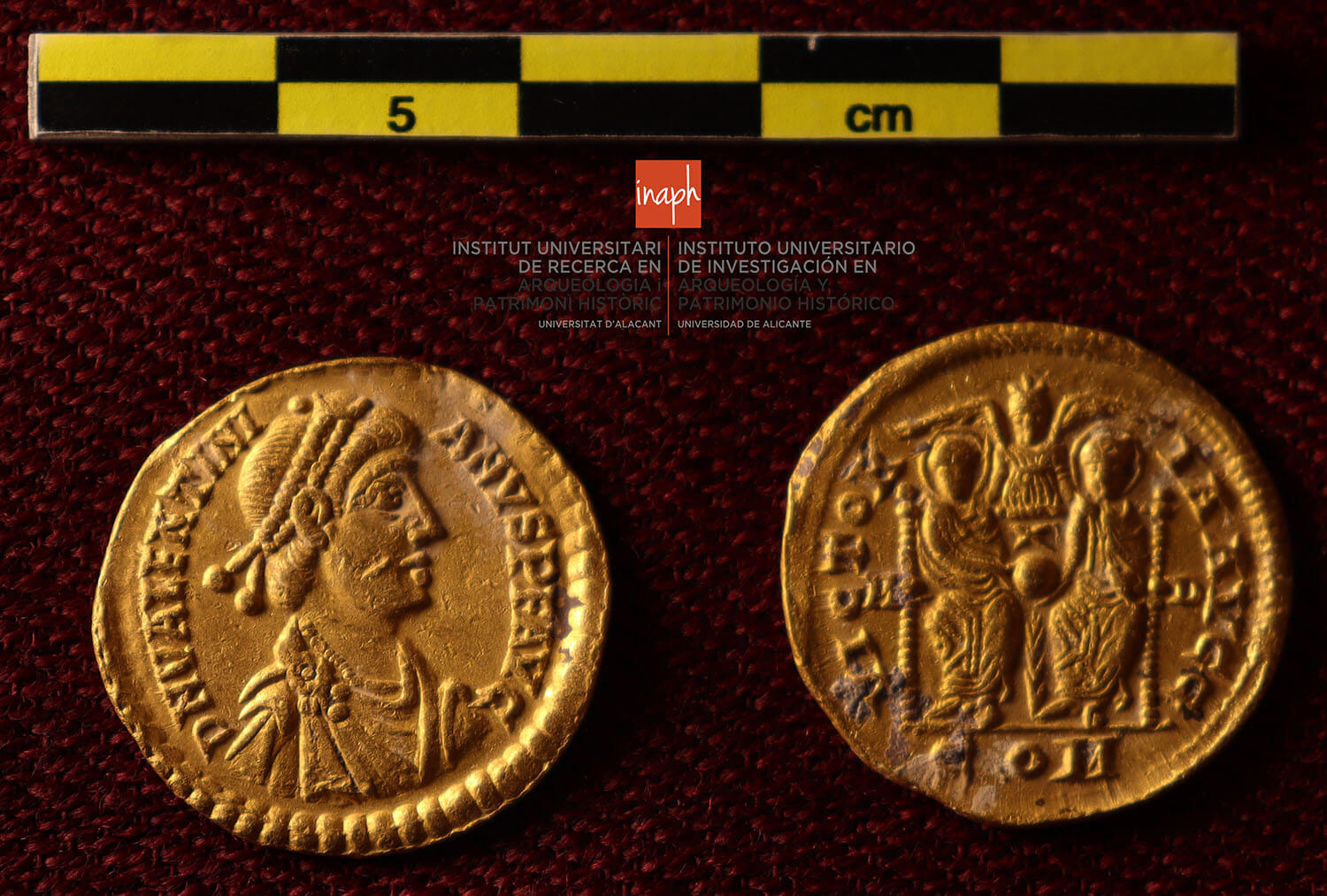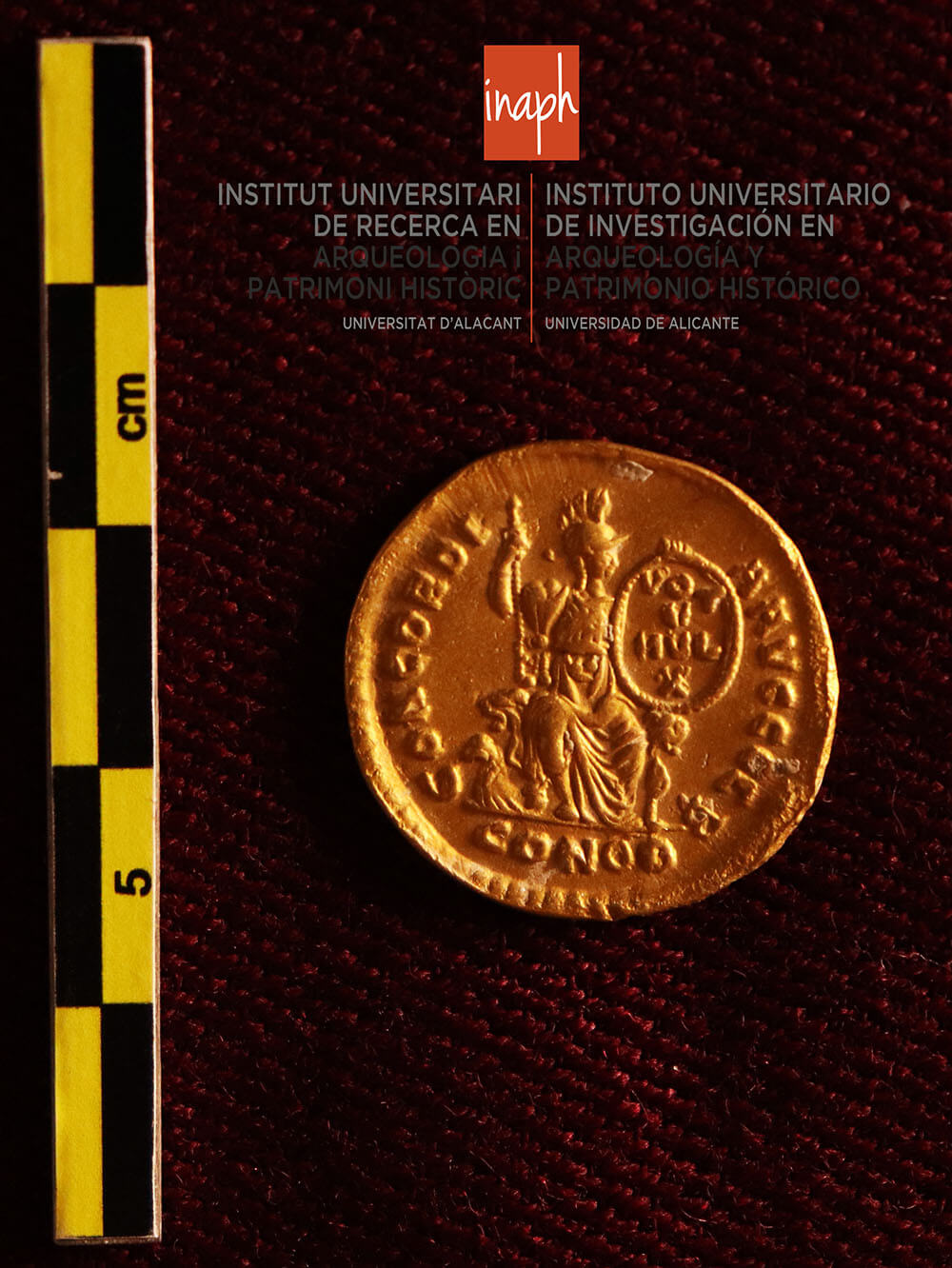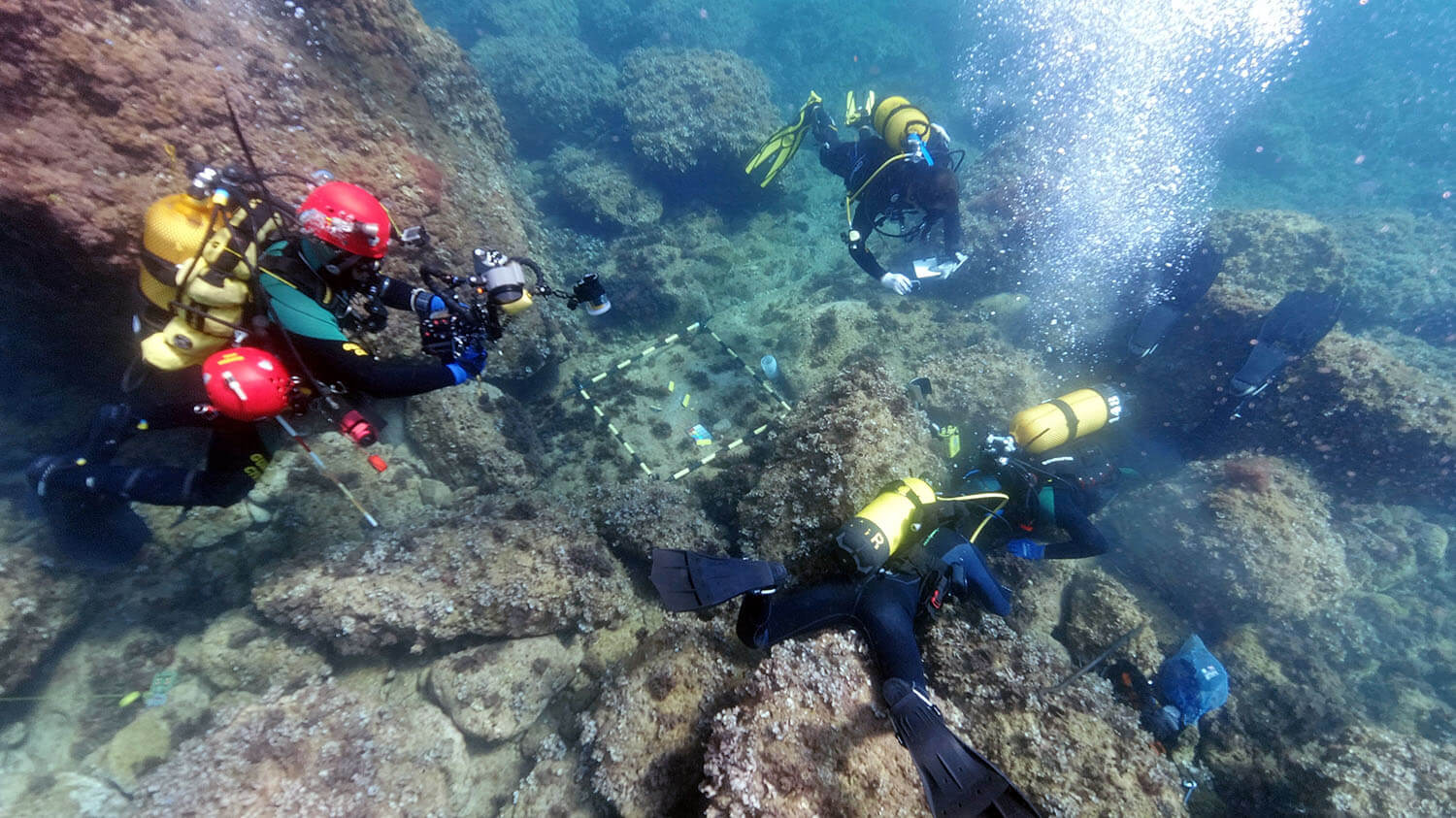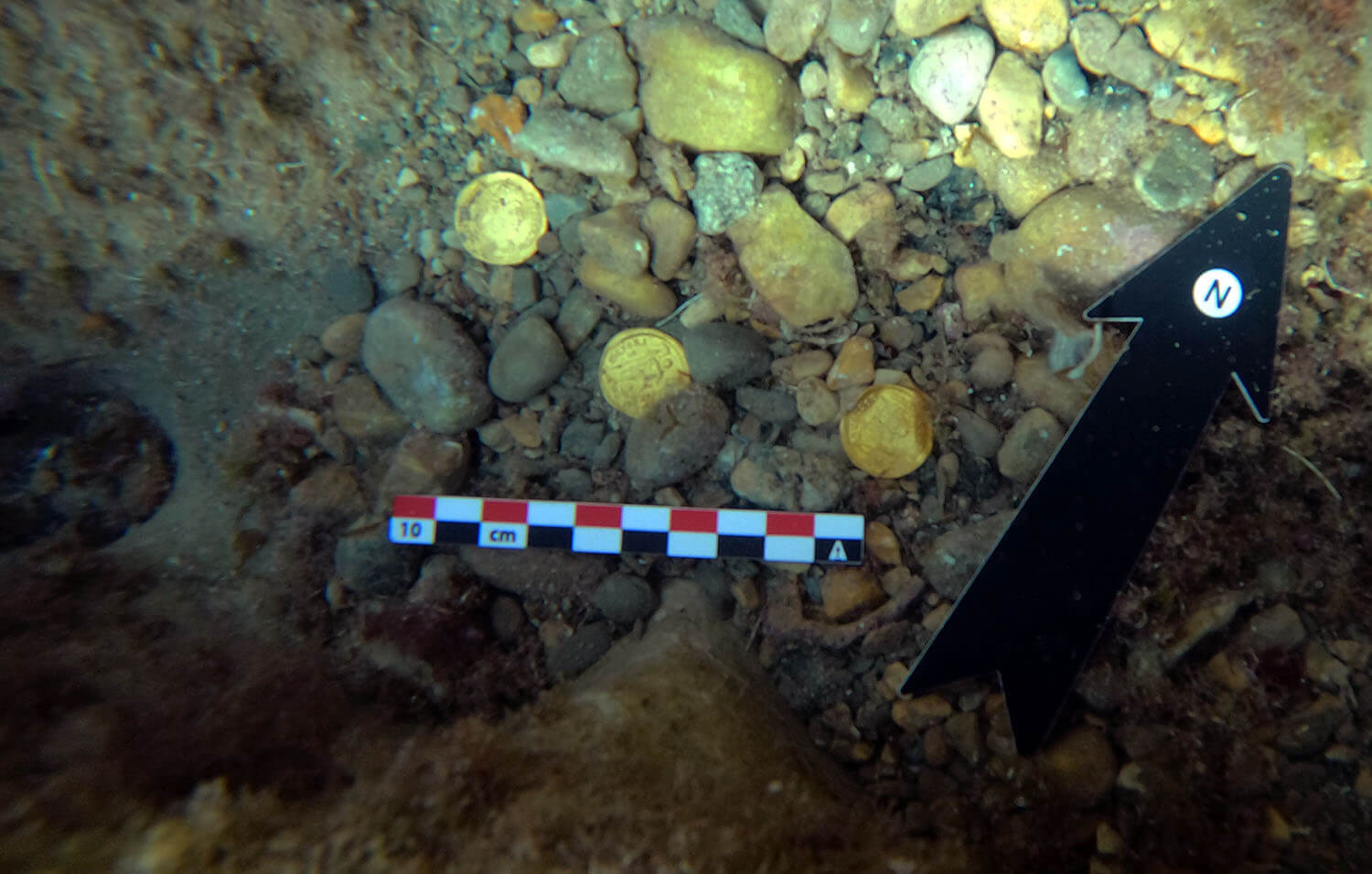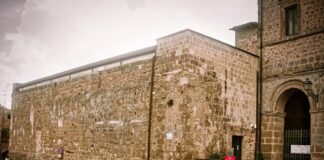
During one of their dives on 24 August 2021, Luis Lens Pardo and Cesar Gimeno Alcala found something incredible: they discovered eight gold coins in the bay of Portitxol (Xabia), which is located on the Costa Blanca not far from Alicante. The finders immediately took the coins to the authorities of the town of Xabia, who then sent archaeologists to the bay.
More and More Gold Coins in the Bay of Portitxol
In fact, the area is known for underwater finds: anchors, pottery and remains of ships are not uncommon to be found. Therefore, archaeological examinations have been carried out there since 2019.
But the gold coins were so spectacular that the exact location of the find is kept secret, the authorities are afraid of thieves. And there is probably a lot to get. Very close to the first site, underwater archaeologists found another 34 solidi from around AD 400. The objects were taken to the Archaeological Museum of Xabia, where they will be restored, examined and exhibited later.
The city of Alicante, the Archaeological Museum of Xabia and other institutions initiated large-scale explorations in the past weeks to measure and study the area in detail. In the process, archaeologists found 11 more gold coins on the seabed.
Extensive Investigations Are Supposed to Answer Many Questions
Since the beginning of September, Xabia and Alicante archaeologists have had an official excavation permit for the area. But the actual excavation work underwater is scheduled to begin in November 2021. Before that, detailed topographic and photogrammetric data will be gathered.
How Did the Gold Coins End Up in the Sea?
The current total of 53 solidi can be assigned to the Emperors Valentinian I, Valentinian II, Theodosius, Arcadius and Honorius, i.e. to the period from AD 364 to 408. Researchers compare this large hoard to the gold finds of Lava (Corsica) and St Albans (the ancient town of Verulamium in Great Britain). But how did the coins end up in the sea?
Jaime Molina Vidal, professor of ancient history at the University of Alicante and one of the project leaders, told CoinsWeekly that no remains of a shipwreck were found in the vicinity of the coin find, so it does not seem to be lost cargo. We probably have to understand the hoard against the dramatic background of the time.
During the 4th century, Suebi, Vandals and Alans had migrated to the Iberian Peninsula and ended Roman rule there in AD 409. In this period, the Alans plundered the region of Alicante. 53 solidi were a considerable fortune, the owner possibly wanted to keep it safe by escaping with a ship. We will probably never know for sure why the treasure eventually ended up on the seabed.
But since the archaeologists compare it to the Lava Treasure, it is indeed worth recalling certain similarities: the Lava Treasure also contained ancient gold coins that were found in the sea. However, the coins probably did not get there as a result of a shipwreck in ancient times, but much later – perhaps even in modern times, either by people or a landslide.
Professor Molina Vidal and his colleagues hope that the new find and the excavation will enable them to draw conclusions about the period when the Western Roman Empire was losing its power in the provinces.
We reported on the gold coin hoard in St Albans at the time.
However, the largest Roman gold coin hoard remains the Trier Treasure that thieves tried in vain to steal in 2019.
In December 2020, a detectorist in Denmark discovered about 1 kilogram of gold objects from the early Middle Ages, including numerous coins – some of them from late antiquity.



